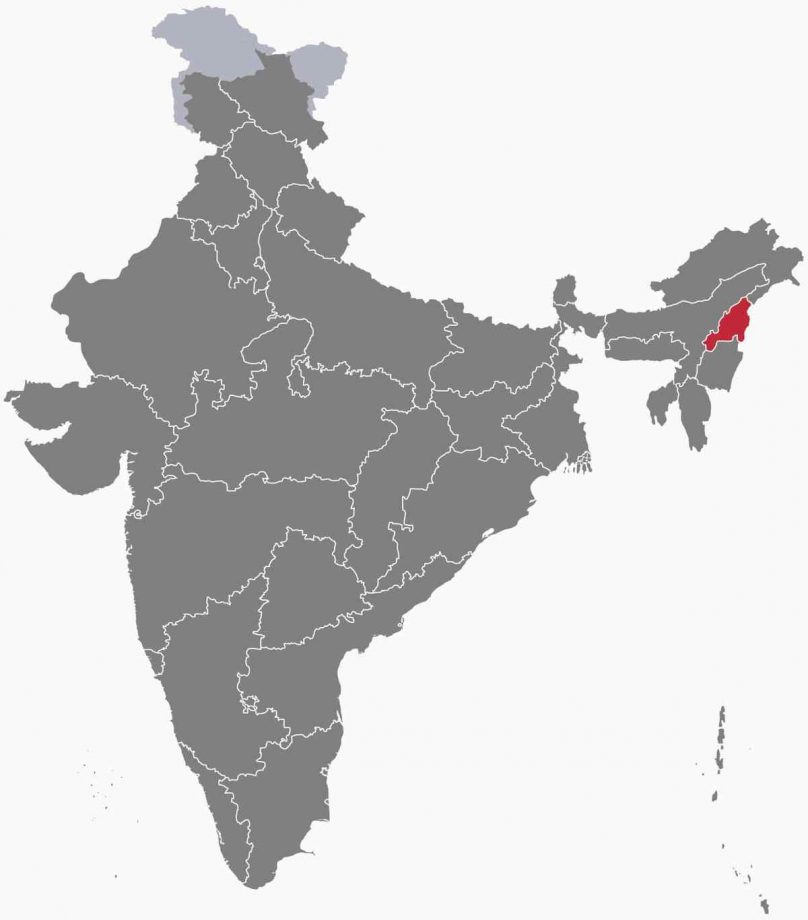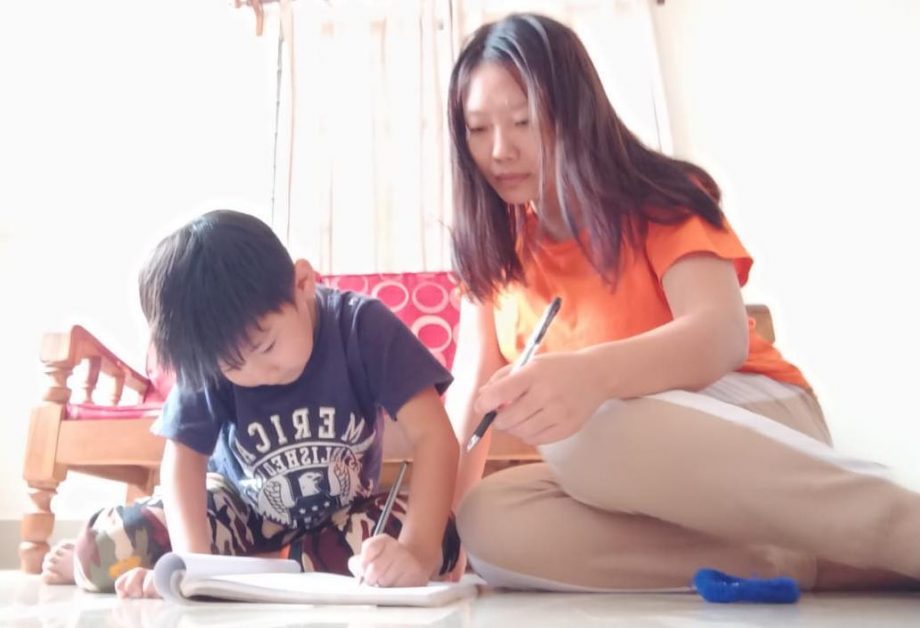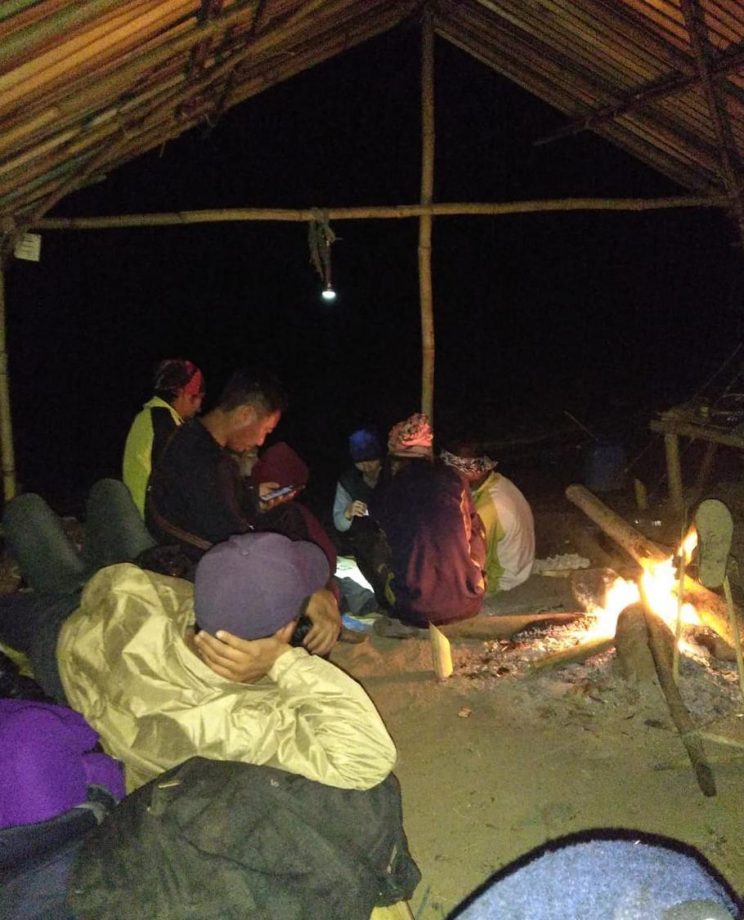Teaching in the Times of Corona
Structural Inequalities and the Limitations of Online Pedagogy in North East India
The COVID-19 pandemic has gravitated a shift in teaching practices across the world. The fear of contagion and the necessity of social distancing have rendered traditional classroom teaching impossible. Over the last two months, the higher education sector has shifted from the classrooms and campuses to online conferencing applications and discussion forums. Teachers, taking the initiative on their own, have started conducting classes over online broadcasting platforms, distributing notes and materials through email and instant messengers, and communicating with students over phone calls and voice messages (The Hindu 2020). This technological adaptation is perhaps keeping the educational sector up and running through the current crisis. However, the access to and knowledge of information technology is structurally mediated by underlying factors such as one’s social position, regional location, gender performativity, etc. I write as a teacher trying to take online classes for my (undergraduate and postgraduate) students in a private University in North East India, a region disrupted by conflict and hampered by poor infrastructural standards, with the hope of highlighting how online teaching is essentially exclusive and implicitly denies students equal access to education. The article aims to point out how online teaching and learning, which presume a uniform standard of e-literacy, obscure and negate the structural inequalities which regulate access and knowledge of computer technology in the region. The emphasis and insistence upon online learning practices would, therefore, inherently be unequal and discriminatory.
Teaching online in Nagaland
I come (and write) from South India, though I work in Dimapur, Nagaland. I moved to Nagaland in February 2019 and have been working there for the past year. Nagaland is a state in India’s north-eastern frontier, a region on the fringes of the nation, an anomalous space where the grand narrative of the Indian state stands questioned (Glancey 1988: 1-3; Zhimomi 1986: xiv-xvii; Figure 1). The North East of India is largely a Christian majority region within a Hindu majority nation, where the people still define themselves through their various tribal identities. Nagaland, as with most of the North-Eastern states, faces a severe shortage of infrastructural development. Despite having a population of over two million, the Nagaland state has only one railway station, two cinema halls, and not a single medical college. The relatively isolated location of Nagaland and the early control of border traffic had led to a minimal incidence of COVID-19 in the state. As of 1 March 2020, only a single patient was found to be infected with the virus and was shifted for treatment to the Guwahati Medical College Hospital in Assam (India Today 2020). Dimapur, where I currently work, is the commercial and transportation hub of Nagaland with the state’s only railhead. Quite a few of my students are from the city itself. But following a year of close interaction, I realized that a large number – and this is approximately 60 percent of the students – are from other remote districts. Some of these students have a seat at the University Hostel, while a large number stay in private hostels and as paying guests nearby.

Figure 1: Location of Nagaland in North East India. Image downloaded from WikimediaCommons. Attribute: (Filpro) / CC BY-SA (https://creativecommons.org/licenses/by-sa/4.0)
On 16 March 2020, the Nagaland government declared the closure of educational institutions across the state as a precautionary measure to contain the spread of COVID-19 (Toy 2020: 1). The hostel inmates were asked to vacate their rooms immediately. This sudden announcement had put undue stress (due to financial limitations and difficulties involved in making transportation arrangements) upon the students. Many of them – particularly from the eastern districts – had to travel anywhere between 12 to 20 hours straight, by shared taxis, buses, minivans, etc., via circuitous routes through Assam (the neighboring state) to reach their villages. Unlike the hostel students, a significant number of students who lived in private accommodations had to stay back in Dimapur. Fearing the spread of COVID-19 in distant villages with limited healthcare facilities, several village councils had by then issued notices banning people, including students, from entering/returning to their own districts. As a result, many students are still stuck in their private hostels, with only their bare essentials provided. Most hostel owners have been immensely considerate and have continued to provide students food and accommodation without collecting rent/fees due to the shortage of cash in the ATMs. The quality of food (which is largely composed of a staple of rice and lintels supplemented with an occasional dish of meat) varies to a large degree. Students living in hostels, however, have to make their own arrangements for internet connectivity.
Throughout the lockdown, I have felt the complete inadequacy of providing guidance to students through online classes. The University Grants Commission (UGC) and the MHRD (Ministry of Human Resources Development) are the central governing bodies which make policy decisions pertaining to higher education in India. However, in the face of the ongoing crisis, both these bodies have been strangely silent. Instead of formulating a clear plan, specifying the course of action for the current semester, the UGC and MHRD have sent circulars to various institutions, mentioning that precautions were to be taken for COVID-19 containment. The circulars included instructions to ensure that students complied with the Prime Minister’s plea for clapping hands, clanging plates, and switching off lights in appreciation of health workers (Joshi 2020). It happened at a time when there were barely any students staying inside the campus. In every single circular, the UGC/MHRD celebrated the fact that the current semester was progressing smoothly, and the syllabus was being completed through online classes.
Nothing could be further from the truth. In the absence of a uniform plan, teachers were and are still caught in a state of limbo. The current measures open us up to all forms of systemic exploitation. The teachers are required to ensure syllabus completion, internal assessment, examination paper setting, etc., even before the usual deadlines under the pretext that we are working outside office hours. Many of us continue to find working from home difficult. Teachers are assigned additional tasks and overtime work. Besides, the monthly wages, though guaranteed through the Disaster Management Act (LiveLaw 2020), are far from assured. A large number of private institutions across the nation have already withheld salaries of employees, blaming the uncertain future faced by the education sector (Nanda 2020). This happened despite the fact that tuition and hostel fees for the entire semester had already been collected in most cases (Mohanty 2020).
The COVID-19 crisis is projected as a moment for teachers to prove their dedication, integrity, loyalty, and sensitivity to the state and its education sector. Teaching, as an occupation, is commonly regarded as a form of service. The role of teachers, like that of caregivers, is often glorified. They are, in turn, expected to work selflessly and dedicate their time and effort without any hesitation. Such romanticization lays unnatural expectations upon teachers to work during this moment of crisis, reducing teaching from the position of a profession to a charitable mission. Besides, such expectations also undermine the labor involved in teaching. Teachers are often criticized, particularly during moments of crisis, for drawing a salary for the whole year despite enjoying month-long paid vacations. However, this discounts the work which teachers regularly have to undertake outside their regular working hours – preparing for classes and lectures, checking examination papers and assignments, setting questions for examinations, designing syllabi for upcoming semesters, mentoring and monitoring students, etc. These tasks infringe upon the life and space of every teacher and often force them to neglect their personal life as well as their professional career (which requires other time-extensive labor such as research publications, seminar presentations, etc.). During this state of limbo, teachers – who themselves are adapting to a new medium of pedagogy – have to confront themselves with certain uncomfortable questions: For example, how far am I making myself useful through this lockdown? How much knowledge does get imparted through online classes? What might such online classes offer to the students in Nagaland? How could digital classrooms take place with precarious internet connectivity where most students do not even have access to email or the mobile phone?
I find online teaching in Corona times oppressively limited. I have talked to a few students regarding the possibility of holding classes over Zoom or Hangout.[1] The lack of internet connectivity seemed to be the most common reason why taking online classes would be impractical if not completely impossible to continue. A national survey on the “Key Indicators of Household Social Consumption on Education in India (July 2017-June 2018),” noted that only 42 percent of urban households and 14.9 percent of rural households in India had access to the internet (Press Information Bureau 2019).[2] The network coverage is abysmally poor in several villages from where most of my students come. Many students did not even have enough access to send an email. They had transferred their assignments to their cousins’ phones and pen drives, so that they could forward the files to me via email. Quite a few of them could not even be reached over the phone. How would they be informed of the fact that online classes have been arranged? Villages in Nagaland are also severely affected by a shortage of electricity supply. Power cuts are expected to be more common over the next few months when summer reaches its peak. Even in Dimapur, during summer months, the electricity supply is cut for an average of four hours every day.
What is even more striking is the sheer lack of e-literacy in a place like Nagaland. Most of my students are quite adept when it comes to using smartphones. Many frequently use social media platforms like Instagram, WhatsApp, TikTok, and play games such as PlayerUnknown’s Battleground (PUBG) and Mobile Legends. However, they are often unable to install an application from Play Store or even do something as basic as copying or typing out a URL on a web browser. Most of them have never used a laptop and would only begin when they must type out their dissertation in their final semester.
E-literacy is often taken for granted. The ease with which we are expected to use our computers or the ownership of a personal computer hides some problematic questions pertaining to (in)visible social inequalities. The majority of my professional colleagues[3] – urban, middle class, English-schooled, college-educated men and women in the early 2000s – enjoy the privilege of having their own personal computer or a desktop computer at home. When it comes to the students, the ownership of computers and access to the internet differs significantly from the teachers. A recent survey by the University of Hyderabad found that 75 percent of students who use the internet accessed it through their mobile phones. Students coming from rural backgrounds complained about how reading on the mobile phone, preparing PowerPoint presentations, writing assignments as MS-Word documents posed significant challenges (Deeksha 2020). The Household Social Consumption survey substantiated the astounding shortage of computer infrastructure at the grassroots level. Only 23.4 percent of urban households and 4.4 percent of rural households in India owned a computer (Press Information Bureau 2019).
Even at home, the imbalance in e-literacy shows gradations due to the gendered access to time and technology. Gender roles and expectations often determine the amount of access students have to computers within a household. During classroom interactions, I have observed that male students often displayed greater competency while using computers (as opposed to smartphones). Women students from the postgraduate level, during a preliminary discussion over WhatsApp, revealed to me how they felt that there was a strong association of gender with computer use. Most students said that “boys are better at computers than girls!” and pointed out that people associated PCs with boys as PC games usually idealized masculinity and aggression (2 May 2020). A few students pointed out that their elder brothers usually monopolized time on the PC, and therefore they believed that their brothers were better at using computers than they were. In contrast, female students who were the eldest children in their family were more confident in stating that they are proficient in using computers. It is not just a matter of interest or taking the time or the effort to learn. The knowledge of and familiarity with computer technology has nothing to do with merit or proficiency but rather with socially mandated and economically restricted access and availability of (time to use) computers. As succinctly pointed out by a final-year postgraduate student, “Women get more household chores, whereas boys get time to sit and play [on the PC]” (2 May 2020).
Precarious state of students, vulnerable teachers
Last year, while my postgraduate students were in the process of writing their dissertations, I realized that the overwhelming majority of them did not have a laptop. They wrote their theses at net centers, by time-sharing laptops with friends, or borrowing them for weekends from their cousins who were working. Most of my students, therefore, had found it quite difficult and uncomfortable when the classroom was suddenly shifted online. They simply are not accustomed to the medium. It is a medium that makes them feel conscious and inadequate. The comfort and confidence a teacher builds in a classroom is developed over months. This inclusiveness is entirely lost through disembodied interactions punctuated by static white noise.
There are further circumstances which make online classes untenable. A sizable number of my students come from middle income households from far away districts of Nagaland. It is not just their remoteness that matters, but rather the social and familial situation they come from (or rather return to). Most of my students – especially women – from other districts have a whole set of other household responsibilities entrusted upon them the moment they reach home. Many of them are the eldest amongst five or six siblings. The photographs that my students sent to me or shared over social media show that they are spending time now working in fields, catching fish, cooking, feeding, and taking care of children, taking up the responsibility of care in a large household (Figure 2, 3).[4] Besides, many of them live in houses with two rooms separated by a bamboo weave. How can students, in this context, be expected to spend two or three hours in inviolable privacy to attend the online classes which a teacher is supposed to conduct every day?

Figure 2: A student teaches her nephew during the COVID-19 lockdown in Dimapur, Nagaland. Copyright: Eyilobeni M. Odyuo, published with permission.

Figure 3: A student at work gardening during the COVID-19 lockdown in Dimapur, Nagaland. Copyright: Iranggumle Hemang, published with permission.
Recently, when I called a student to find out why he was late in submitting an assignment, I found out that a few of them have signed up as volunteers guarding the porous boundaries of their districts to prevent illicit traffic of outsiders who might bring the virus closer to home (Figure 4, 5). They have been sleeping in open sheds, and having food and changing at the local police station. They have not been home for over any considerable duration of time during the past three weeks.

Figure 4 and 5: Youngsters watch over the Assam-Nagaland border to prevent illegal traffic during the lockdown. Copyright: Pongjei L. Konyak, published with permission.

Figure 5
Keeping in mind the precarious situation of my students, I have largely resorted to collecting and sending notes, making presentations, and sharing these materials over a Google Classroom group (a practice which thankfully my students have been familiarized with over the past year). These notes are rather rudimentary and prevent me from going on the many digressions and discussions which make classes far more interactive and informative. I hope to send a few audio recordings as podcasts, but downloading or listening to these might again be difficult for students.
The utter complacency with which the MHRD had addressed the crisis facing higher education in India requires further attention. Putting all the thrust on teachers to give online classes for the sole aim of covering the syllabus completely ignores the ground reality of the current predicament of the students. The teachers do not have any clarity regarding the proposed course of action they are supposed to take. We mechanically search for and upload notes and speak in front of a blank screen in our desperate need to feel useful in this critical time. As teachers, we spend our time indiscriminately working on whatever tasks are assigned to us, while being totally in the dark as to whether we shall ever be paid for the work we are investing in.
Towards an unequal future
Online teaching can only supplement and never substitute classroom teaching. To pretend otherwise – to act as if all is in order due to online classes – is to understate the unprecedented crisis higher education faces in Nagaland. The push to adopt online teaching in a region which suffers from inadequate technological reach is essentially discriminatory. Access to and knowledge of computer technology is determined by existing socio-economic conditions and mediated by patriarchal norms governing time and labor. In its latest circular, the UGC mentioned that “some of the universities lack[ed] adequate IT infrastructure for effective delivery of education through e-learning mode” (UGC 2020: 3). Nevertheless, teachers are asked to take the initiative in maintaining “substantive contact” with the students (UGC 2020: 2). Moreover, the classes are to be continued for the rest of this semester through online platforms, following which exams may be scheduled in July (UGC 2020: 8). Online classes are predicated on a presumed level of e-literacy. Competency in computer technology cannot be held as the most important measure of student learning. The uncritical emphasis on online learning in Corona times threatens the right to education and the equal distribution of knowledge and information.
Disclaimer: This article was developed from a Facebook post originally written on 21 April 2020. The post took form following discussions and conversations with fellow young teachers in India who similarly felt disadvantaged offering their courses online. A petition has recently been started on change.com, demanding the UGC/MHRD to stop conducting online examinations. On 25 April 2020, NDTVreported that a panel appointed by the UGC/MHRD had submitted recommendations suggesting that the academic session should be postponed until September 2020 instead of July 2020. Significantly, the panel also recommended that the universities should only conduct online examinations if and when they have adequate infrastructure (NDTV 2020). On 29 April 2020, UGC released its guidelines pertaining to the reopening of institutions, the conduct of examinations, and the academic calendar to be followed by universities, etc. The guidelines, while noting the lack of IT infrastructure, continued to state that online classes should be taken throughout the ongoing semester.
First submitted on 26. April 2020, revised version from 04. May 2020
Achuth Ajit is an Assistant Professor of English at St. Joseph University in Dimapur, Nagaland. His PhD dissertation (Cultural Studies) explored the emergence of public dining spaces and practices in Kerala, India. His current research interests include food culture, film, and visual studies, colonial modernity, and social change.
Email: achuthajit@gmail.com.
#Witnessing Corona
This article was simultaneously published on the Blog Medical Anthropology . Witnessing Corona is a joint blog series by the Blog Medical Anthropology / Medizinethnologie, Curare: Journal of Medical Anthropology, the Global South Studies Center Cologne, and boasblogs.
Bibliography
Deeksha, Johanna. 2020. UoHConducts Survey, finds Students don’t have Access to Net, Electricity. Drops Idea of Online Classes to Students’ Relief. https://www.edexlive.com/news/2020/apr/23/uoh-conducts-survey-finds-students-dont-have-access-to-net-electricity-drops-idea-of-online-clas-11524.html/. Last access: 23/04/2020.
Glancey, Jonathan. 1988. Nagaland: A Journey to India’s Forgotten Frontier. London: Faber & Faber.
India Today. 2020. First COVID-19 Case in Nagaland, Man from Dimapur Tests Positive. https://www.indiatoday.in/india/story/first-covid-19-case-in-nagaland-man-from-dimapur-tests-positive-1666338-2020-04-13/. Last access: 01/05/2020.
Joshi, Vineet. 2020. Public Notice (Information about Stay Safe-Arogya Setu App, General Measures to improve body’s natural defence system, Light candle at 9:00 pm on 5th April 2020 for 9 minutes), dt. 03 March 2020. National Testing Agency (Department of Higher Education, MHRD, GoI). http://cbse.nic.in/newsite/attach/Lightcandle_03042020.pdf. Last access: 06/05/2020.
LiveLaw. 2020. Employers Must Pay Wages Without Deduction During Lockdown; Landlords Should Not Demand Rent, Evict Workers: MHA Directions. https://www.livelaw.in/top-stories/employers-must-pay-wages-without-deduction-during-lockdownlandlords-should-not-demand-rent-evict-workers-mha-directions-154494/. Last access: 24/04/2020.
Menon, Shyam. 2020. Limitations of Online Learning. https://www.thehindu.com/opinion/op-ed/limitations-of-online-learning/article31466511.ece/. Last access: 01/05/2020.
Nanda, Prashant K. 2020. Faculty at Private Schools, Colleges Stare at Pay Cut, Late Payment. https://www.livemint.com/education/news/faculty-at-private-schools-colleges-stare-at-salary-cut-late-payment-11586719545399.html. Last access: 01/05/2020.
NDTV. 2020. UGC Panels Recommend Academic Sessions in September, Online Exams in Varsities. https://www.ndtv.com/education/ugc-panels-recommend-academic-session-in-september-online-exams-2218066/. Last access: 25/04/2020.
Press Information Bureau. 2019. Key Indicators of Household Social Consumption on Education in India NSS 75th Round (June 2017-July2018). https://pib.gov.in/newsite/PrintRelease.aspx?relid=194921/. Last access: 24/04/2020.
The Hindu. 2020. Coronavirus: In the Time of the Pandemic, Classes go Online and on Air. https://www.thehindu.com/news/national/in-the-time-of-the-pandemic-classes-go-online-and-on-air/article31264767.ece. Last access: 01/05/2020.
Mohanty, Basant Kumar. 2020. Professional College Pay Blow.https://www.telegraphindia.com/india/coronavirus-lockdown-professional-college-pay-blow/cid/1763991/. Last access: 01/05/2020.
Toy, Temjen. 2020. Notification No. GAB-I/COM/GEN-1/2020, dt. 16 March 2020. Home Department (Government of Nagaland). https://twitter.com/dipr_nagaland/status/1239563605466472448/photo/. Last access: 06/05/2020.
University Grants Commission (UGC). 2020. UGC Guidelines on Examinations and Academic Calendar for the Universities in view of COVID-19 Pandemic and Subsequent Lockdown. New Delhi: UGC.
Zhimomi, Kuhoi H. 1986. Politics and Insurgency in Nagaland. New Delhi: Deep & Deep Publications.
Footnotes
[1]The writer conducted a series of informal discussions over telephone and WhatsApp with postgraduate and research students between 20 April and 3 May, which contributed several pertinent thoughts regarding the unequal distribution of household work and its impact on computer use in Nagaland.
[2] The Key Indicators of Household Social Consumption on Education in India National Sample Survey (NSS) 75th Round (June 2017-July2018) survey has, rather unsurprisingly, not covered the states of North East India, where internet and IT penetration would be the lowest (Press Information Bureau 2019). This lack of data, however, would only promulgate the low degree of internet connectivity and computer usage in the region.
[3] In the original post, I had used the term “Facebook friends” instead of “professional colleagues” particularly to signal the privilege enjoyed by me and many of my acquaintances who belong to the middle class in India. The privilege of having access to IT infrastructure lies at the root of associating e-literacy with merit, of looking at students who are not acquainted with computers with a sense of contempt or condescension. However, this cannot be uniformly be applied to all teachers or professional colleagues. Over the past decade or so, following reservation policies initiated in the early 1990s, young teachers (often first-generation educated) from disadvantaged and marginalized backgrounds have emerged within Indian academia. It would seem a bit superfluous to equate their position and their experience with more privileged teachers who came from middle/upper class/caste backgrounds.
[4] The photographs included in this contribution were collected from students at the end of April 2020.































